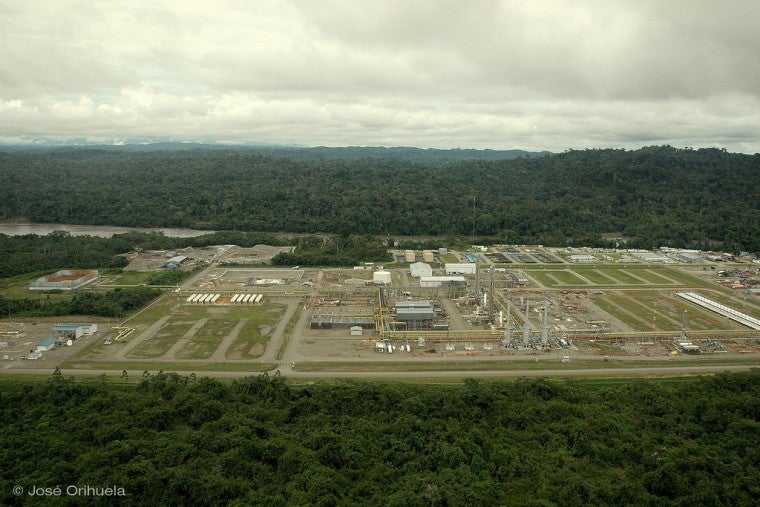The Amazon Basin is becoming a hot spot for oil and gas exploration. New developments are mostly found in the Amazon Headwaters, extending in an arc from Venezuela through Colombia, Ecuador, Peru, western Brazil, and Bolivia.
These discoveries bring great promise for economic development. Yet they also pose grave threats to indigenous forest dwellers and to the incomparable biodiversity of the region.
The destruction and threats to indigenous peoples typically result from the indirect effects of opening up the forests to land invasions, forest clearing and burning, coca growing, bushmeat hunting, and illegal gold mining. These destructive effects are caused when oil and gas development opens an area by building networks of roads that in turn open the region to land invasions and forest destruction.
If oil and gas can be developed without opening the country by building roads, it would be possible to protect indigenous peoples, including uncontacted groups, and to preserve the natural values of the forest.
The model for this kind of forest protection is called “offshore-inland”, an analogy to the way offshore platforms are used to extract oil and gas from the oceans.
The Inter-American Development Bank has been the leader in developing this offshore-inland model, beginning in 2002 at Camisea, a major gas field on the Urubamba River in Peru.
In that year, oil company developers Pluspetrol and Hunt Oil, together with the government of Peru, approached the Bank, eager to have it as a lender to validate the project and to encourage other lenders to participate.
The Bank, under the leadership of then-President Iglesias, agreed to finance a part of the project—provided the parties would agree to conditions to assure a development with minimal impact on the forest and indigenous dwellers in the Urubamba Valley.
The most important condition was that the project, including the pipelines over the Andes to the Pacific Coast, be developed without roads, by using helicopters and by barging heavy infrastructure from Manaus up the Urubamba River during the high-water season.
The result is a completely isolated facility, analogous to an ocean platform that has preserved the forest and forest dwellers from outside forces of destruction.
Since then the government of Peru has adopted regulations requiring that hydrocarbon development be done using the offshore-inland model unless a company can convincingly demonstrate why it is impossible to do so. To date, oil companies in the country have followed this model, including Perenco in block 67 in northern Peru and Hunt Oil in its exploration work in Block 76 east of Manu National Park.
In financing the Camisea project, the Bank also took commendable steps to mitigate the effects of development by working with the Peruvian government to establish national parks and indigenous reserves in the region, including Otishi National Park, the Machiguenga Comunal Reserve, the Ashaninka Comunal Reserve, and the Megantoni National Sanctuary, protecting more than a million hectares of this magnificent region.
Hydrocarbon development should also ensure that the economic benefits are equitably shared for health, education, and economic development in affected regions. There is still more to be done in this regard, as the Bank’s efforts to ensure such social benefits have not yet been completely addressed by the Peruvian government.
Last year was the tenth anniversary of the operation of the Camisea project. It now supplies 98 percent of the natural gas consumed in Peru. It generates more than a billion dollars in annual royalty income and has increased the Peruvian GDP by nearly 1 percent.
Camisea is a model of leadership from the Inter-American Development Bank. It should be the standard for all financing of hydrocarbon infrastructure by the Bank and other lenders.

Bruce Babbitt served under President Clinton as Secretary of the Interior from 1993 to 2001. In 2005 he served as Chair of the Inter-American Bank’s Blue Ribbon Panel on the Environment.


Leave a Reply